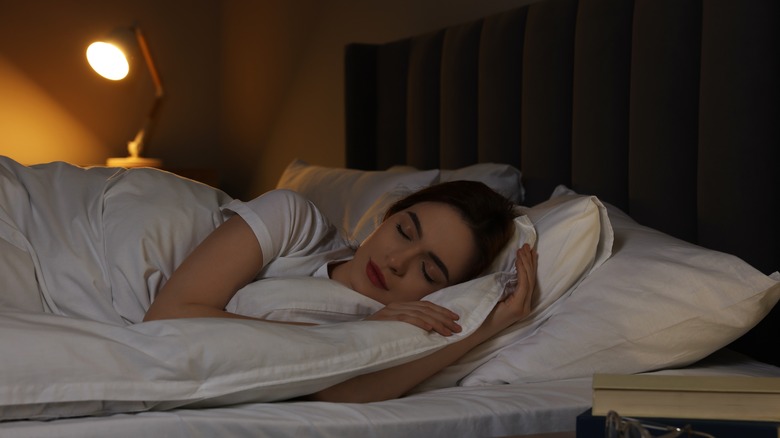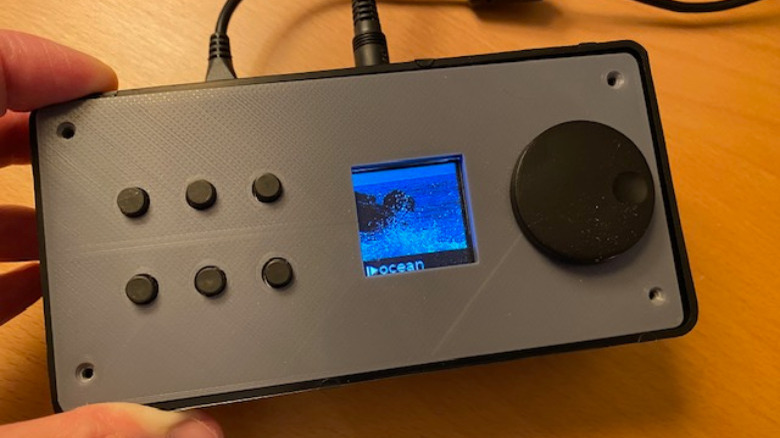The Raspberry Pi Project That'll Help You Sleep Better At Night
In an ideal world, you can drift off to dreamland as soon as your head hits the pillow. However, as much as you'd like to do so, sleep can be quite elusive at times, and you may find yourself wide awake in the wee hours. If this happens more often than you'd like, maybe it's time to consider listening to white noise. White noise helps individuals sleep faster and improves overall sleep quality.
The easiest ways to listen to white noise are by streaming YouTube videos or Spotify podcasts or downloading white noise apps. Unfortunately, such practices can drain your phone's battery fast, especially if you play it throughout the night. A more sustainable solution might be investing in a dedicated white noise machine, but with prices often soaring over $150, it's not always the most affordable option.
Developer Alan Boris has a better idea. Using a Raspberry Pi and a couple of buttons, he created the Ultimate Noise Box as a cost-effective alternative for those DIYers with spare Pi boards and hardware accessories lying around.
What's the Ultimate Noise Box?
The Ultimate Noise Box is a Raspberry Pi-powered white noise machine. Out of the box, it features only nine audio samples. You can upload custom WAV files (in uncompressed PCM format) via the user-friendly web-based interface. What's particularly exciting about this DIY machine is its capability to play your audio in a gapless loop.
To get the box running, you must connect it to an external speaker with the built-in line-level audio output jack and use the rotary switch to flip through your library. You can also just pick a sound from the web interface and play it there. Other physical buttons on the box include the stop button, LCD button (for switching the LCD between device info display and volume display), and four sound buttons (that serve as shortcuts and can automatically play four sounds you select from the web interface).
If you're interested in creating your own Ultimate Noise Box, you can go the minimal hardware route, which only requires a Raspberry Pi and the Adafruit I2S Audio Bonnet and can be controlled from the web UI. For the full-sized version, on the other hand, here's what you'll need:
- a Raspberry Pi 3 Model A+
- an Adafruit I2S Audio Bonnet for Raspberry Pi
- an Adafruit I2C Stemma QT Rotary Encoder Breakout
- an Adafruit rotary encoder
- an Adafruit scrubber knob
- six Adafruit momentary SPST pushbuttons
The detailed instructions are found in the project creator's GitHub.

